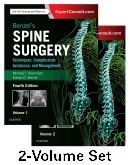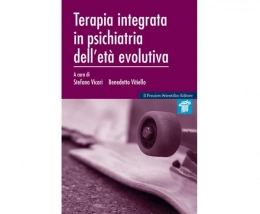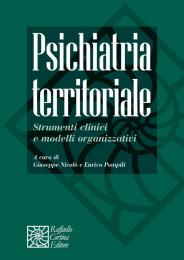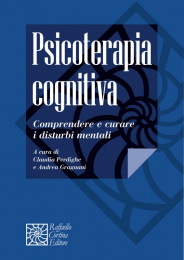Non ci sono recensioni
In the latest edition of Benzel’s Spine Surgery, renowned neurosurgery authority Dr. Edward C. Benzel, along with new editor Dr. Michael P. Steinmetz, deliver the most up-to-date information available on every aspect of spine surgery. Improved visuals and over 100 brand-new illustrations enhance your understanding of the text, while 26 new chapters cover today's hot topics in the field. A must-have resource for every neurosurgeon and orthopedic spine surgeon, Benzel's Spine Surgery provides the expert, step-by-step guidance required for successful surgical outcomes.
| Features: |
|
| New To This Edition: |
|
VOLUME 1
SECTION 1
History
1 History of Spine Surgery
2 History of Spine Biomechanics
3 History of Spinal Instrumentation: The Modern Era
SECTION 2
The Fundamentals
4 Evaluation of Spinal Alignment
5 Functional Anatomy of the Spine
6 Muscular Support of the Spine
7 Practical Anatomy and Fundamental Biomechanics
8 Applied Anatomy of the Cervical Spine
9 Applied Anatomy of the Thoracic and Lumbar Spine
10 Applied Anatomy of the Sacral Spine
11 Intervertebral Disc: Anatomy, Physiology, and Aging
12 Physical and Neurologic Examination
13 Differential Diagnosis of Surgical Disorders of the Spine
14 Anatomy and Physiology of Congenital Spinal Lesions
15 Anatomy and Pathophysiology of Acquired and Systemic Spinal Disorders
16 Intervertebral Disc Process of Degeneration: Physiology and Pathophysiology
17 Intradiscal Pressure
18 Defi nition and Assessment of Dysfunctional Segmental Motion
19 Neural Injury at the Molecular Level
20 Pathophysiology of Cervical Myelopathy: Biomechanics and Deformative Stress
21 Pathophysiology of Thoracic Myelopathy: Biomechanics and Deformative Stress
22 Anatomy of Nerve Root Compression, Nerve Root Tethering, and Spinal Instability
23 Fundamentals of Spine Surgery
24 Preoperative and Surgical Planning for Avoiding Complications
25 Patient Selection for Spine Surgery
26 Masqueraders of Spinal Pathology
27 Bone Modeling and Remodeling
28 Spine Fusion: Anatomy and Biomechanics of Bone-Bone Interface
29 Biology of Spine Fusion
30 Osteointegration (Osseointegration)
31 Bone Void Fillers: Bone and Bone Substitutes
32 Biologics in Spine Fusion Surgery
33 Materials and Material Properties
34 Biomechanical Testing
35 Computational Modeling of the Spine
36 Electrodiagnostic Studies
37 Intraoperative Monitoring in Routine and Complex Surgery
38 Big Data in Health Care
39 Spine Registries
PART 2.1
Spinal Instrumentation
40 Basic Biomechanically Relevant Anatomy
41 Spinal Implant Attributes: Distraction, Compression, and Three-Point Bending
42 Implant Attributes: Cantilever Beam Fixation
43 Iatrogenic Spine Destabilization
44 Adjacent Segment Degeneration and Disease of the Cervical and Lumbar Spine
SECTION 3
Exposure of the Spinal Column
45 Occipitocervical Spine
46 Cervical Spine and Cervicothoracic Junction
47 Extraspinal Anatomy and Surgical Approaches to the Thoracic Spine
48 Lumbar and Sacral Spine
49 Lateral Extracavitary Approach
50 Retropleural Approach to the Ventral Thoracic and Thoracolumbar Spine
SECTION 4
Surgical Procedures
PART 4.1-Decompression and Arthrodesis of the Cervical Spine
51 Upper Cervical and Craniocervical Decompression
52 Endoscopic and Transnasal Approaches to the Craniocervical Junction
53 Upper Cervical and Occipitocervical Arthrodesis
54 High Cervical and Occipitocervical Plate, Rod, Wire, and Bone Techniques
55 Upper Cervical Screw Fixation Techniques
56 Ventral and Ventrolateral Subaxial Decompression
57 Cervical Spine Construct Design
58 Indications for Spine Fusion for Axial Pain
59 Single- and Multiple-Level Interbody Fusion Techniques
60 Cervical Interbody Strut Techniques
61 Cervical Skip Corpectomy
62 Anterior Subaxial Cervical Fixation Techniques
63 Cervical Spine Fusion Using Dynamic Ventral Cervical Plating
64 Subsidence and Dynamic Cervical Spine Stabilization
65 Cervical Laminectomy and Laminoforaminotomy
66 Cervical Laminoplasty
67 Traditional Interspinous, Laminar, and Facet Fusion
68 Dorsal Subaxial Cervical Instrumentation Techniques
69 Combined Ventral-Dorsal Surgery
70 Percutaneous and Minimally Invasive Approaches to Decompression and Arthrodesis of the Cervical Spine
71 Cervical Discectomy
72 Management of Soft Cervical Disc Herniation: Controversies and Complication Avoidance
PART 4.2-Decompression and Ventrolateral Thoracic and Thoracolumbar Spine
73 MIS Lateral Thoracic and Lumbar Decompression
74 Anterior and Anterolateral Thoracic and Lumbar Spine Decompression and Fusion
75 Thoracoscopic Corpectomy and Reconstruction
76 Anterior Lumbar Interbody Fusion
77 MIS Lateral Lumbar Interbody Fusion
78 Laminotomy, Laminectomy, Laminoplasty, and Foraminotomy
79 Posterolateral Thoracolumbar Fusion
80 Posterior and Transforaminal Lumbar Interbody Fusion
81 Lumbar Interbody Cages
82 Thoracic and Lumbar Spine Construct Design
83 Dorsal Thoracic and Lumbar Simple Hook-Rod, Wire, and Wire-Rod Techniques
84 Dorsal Thoracic and Lumbar Screw Fixation and Pedicle Fixation Techniques
85 Posterior Thoracic and Lumbar Universal Spinal Instrumentation
86 Dorsal Thoracic and Lumbar Combined and Complex Techniques
87 Lumbar Facet Fixation Techniques
88 Paracoccygeal Transsacral Approach to the Lumbosacral Junction for Interbody Fusion
89 Complex Lumbosacropelvic Fixation Techniques
90 Percutaneous and Minimally Invasive Approaches to Decompression and Arthrodesis of the Thoracolumbar Spine
91 Minimal Access and Percutaneous Lumbar Discectomy
92 Thoracic Discectomy
93 Lumbar Discectomy
94 Recurrent Lumbar Disc Herniation
95 Cauda Equina Syndrome
Part 4.3-Arthritides and Related Disorders
96 Cervical Spondylosis
97 Thoracic and Lumbar Spondylosis
98 Rheumatoid Arthritis
99 Ankylosing Spondylitis and Related Disorders
100 Diffuse Idiopathic Skeletal Hyperostosis
101 Ossifi cation of the Posterior Longitudinal Ligament
102 Scheuermann Disease
103 Metabolic Bone Disease
104 The Black Disc: Diagnosis and Treatment of Discogenic Back Pain
105 Psychosocial Aspects and Work-Related Issues Regarding Lumbar Degenerative Disc Disease
106 Medical Management of Neck and Low Back Pain
107 Interventional Nonoperative Management of Neck and Back Pain
VOLUME 2
PART 4.4-Tumors, Vascular Malformations, and Related Lesions
108 Cellular Injection Techniques for Discogenic Pain
109 Primary and Metastatic Bone Lesions
110 Intradural Extramedullary Spine Tumors
111 Intramedullary Spinal Cord Lesions
112 Brachial Plexus Tumors Extending into the Cervicothoracic Spine
113 Preoperative Planning, Staging, Oncological Approaches, and Outcomes for Primary Spine Tumors
114 Staging, Classifi cation, and Oncologic Approaches for Metastatic Tumors Involving the Spine
115 Prognostic Factors, Surgical Outcomes, and Guidelines for Managing Metastatic Spine Cancer
116 Radiosurgery for Spinal Tumors
117 Spondylectomy for Spinal Tumors
118 Tumors at the Foramen Magnum
119 Cervicothoracic Junction Tumors
120 Thoracic and Thoracolumbar Spinal Tumors-Regional Challenges
121 Sacral Tumors: Regional Challenges
122 Spinal Infections: Diagnosis and Treatment of Discitis, Osteomyelitis, and Epidural Abscess
123 Spinal Intradural Vascular Malformations
124 Spinal Dural and Extradural Vascular Malformations
PART 4.5-Trauma, 1090
125 Imaging the Spine after Trauma
126 Classifi cation of Cervical, Thoracic, and Lumbar Spine Injuries
127 Classifi cation and Management of Occipitocervical Injuries
128 Subaxial Cervical Spine Injuries
129 Trauma Surgery: Cervical Spine
130 Cervical Facet Dislocation: Strategy for Reduction, Decompression, and Stabilization
131 Thoracic and Lumbar Spine Injuries
132 Trauma Surgery: Thoracic and Thoracolumbar Junction
133 Trauma Surgery: Low Lumbar Injuries
134 Classifi cation and Management of Sacral Fractures
135 Spinal Traction
136 Timing of Surgery Following Spinal Cord Injury
137 Medical Management of Adult Spinal Cord Injury
138 Medical Management of Pediatric Spinal Cord Injury
139 Emerging Therapies for Spinal Cord Injury
140 Nonoperative Management and Treatment of Spine Injuries
141 Spinal Injuries in Sports
142 Penetrating Spinal Cord Injuries
143 Polytrauma Patient
PART 4.6-Deformity
144 Spinal Deformity: Measuring, Defi ning, and Classifying
145 Spine Deformity and Correction: The Essentials
146 Craniocervical Junction Deformities
147 Sagittal Plane Deformities
148 Cervical Coronal Plane Deformities
149 Kyphotic Cervical Deformity
150 Adult Thoracic and Lumbar Deformity
151 Deformity Correction in the Degenerative Spine
152 Lumbar Spondylolisthesis and Degenerative Sagittal Plane Deformity Techniques
153 Degenerative Rotatory Scoliosis: Three-Dimensional Thoracic and Lumbar Spine Deformity Correction
154 Deformity Surgery for Ankylosing Spondylitis
155 An Approach for Treatment of Complex Adult Spinal Deformity
156 Osteotomies for the Correction of Deformities
157 Minimally Invasive Techniques for Thoracolumbar Deformity Correction
PART 4.7-Spinal Dysraphism, Tethered Spinal Cord, and Spinal Malformations
159 Occult Spinal Dysraphism and the Tethered Spinal Cord
160 Myelomeningocele and Associated Anomalies
161 Spinal Cord Malformations
162 Tarlov Cysts
163 Spinal Cord Herniation and Spontaneous Cerebrospinal Fluid Leak
164 Chiari Malformations and Syringomyelia
PART 4.8-Unique Surgical Considerations
165 Spinal Wound Closure
166 Bone Graft Harvesting
167 Vascularized Bone Grafts in Spine Surgery
168 Minimally Invasive Spinal Decompression and Stabilization Techniques I: Philosophy and Rationale
169 Minimally Invasive Spinal Decompression and Stabilization Techniques II: Clinical Applications and Results
170 Endoscopic Lumbar Discectomy
171 Minimally Invasive Lumbar Interbody Fusion
172 Minimally Invasive Spine Surgery versus Open Spine Surgery
173 Spinal Augmentation for Vertebral Compression Fractures
174 The Obese Patient
175 Geriatric Spine
176 Smoking and the Spine
177 Chronic Pain, Failed Back Surgery Syndrome, and Management
178 Surgery of the Sympathetic Nervous System
179 Arachnoiditis and Syringomyelia
180 Posttraumatic and Idiopathic Syringomyelia
SECTION 5
Motion Preservation Strategies
181 Motion-Sparing, Nonimplant Surgery: Cervical Spine and Lumbar Spine
182 Biomechanics of Motion Preservation Techniques
183 Cervical Total Disc Arthroplasty
184 Lumbar Total Disc Arthroplasty
185 Nuclear Replacement
186 Dorsal Dynamic Spine Stabilization
187 Total Facet Arthroplasty
188 Interspinous Bumpers
189 Explant Analysis of Wear, Degradation, and Fatigue in Motion Preserving Spinal Implants
SECTION 6
Imaging the Spine
190 Overview of Imaging Procedures Available for Spinal Diagnosis
191 Degenerative Disease, Infection, and Neoplasms: Role of Imaging
192 Imaging: Trauma
193 Intraoperative Imaging of the Spine
194 Postoperative Imaging
SECTION 7
Perioperative Treatment
195 Perioperative Management
196 Anesthesia for Spine Surgery and the Prevention of Complications
197 Surgical Incisions, Positioning, and Retraction
198 Blood Loss Management
199 Nutritional Care of the Spinal Cord-Injured Patient
200 Spinal Cord Injury Rehabilitation
201 Orthoses: Complication Prevention and Management
SECTION 8
Avoidance and Management of Complications
202 Neurologic Complications of Common Spine Operations
203 Vascular and Soft Tissue Complications
204 Postoperative Spinal Deformities
205 Arachnoiditis
206 Prevention of Operative Infections: An Evidence-Based Approach
207 Postoperative Medical Complications
208 Cerebrospinal Fluid Fistula and Pseudomeningocele after Spine Surgery
209 Nonunion
210 Spine Reoperations
211 Intraoperative Crisis Management in Spine Surgery: What to Do When Things Go Bad
SECTION 9
Postscript
212 Practice Management, Economics, and Confl icts of Interest from an Organized Neurosurgery Perspective
213 Art of the Clinical Trial
214 Meaningful Retrospective Analysis
215 Art and Science of Guideline Formation




